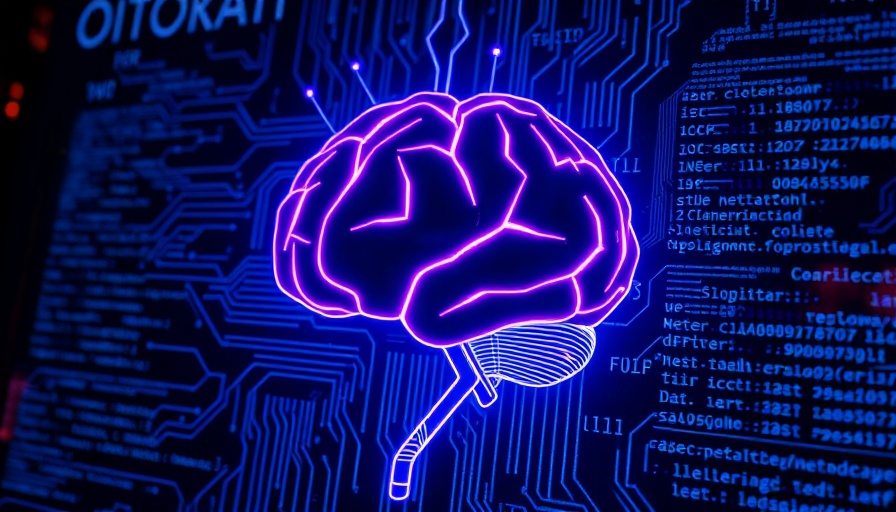
Understanding the EU AI Act: A Shield Against Harms?
The European Union’s Artificial Intelligence (AI) Act is making headlines as it emerges as the first comprehensive regulatory framework aimed at managing the use of AI technologies. As artificial intelligence continues to weave its influence into various sectors—from healthcare to finance—the pressing question looms: can these regulations genuinely protect consumers while also fostering innovation? Assessing this legislation provides critical insights into how we can safely navigate the increasingly complex world of AI.
Navigating the Dual Role of Innovation and Regulation
Emerging technology can be a double-edged sword. On one side, AI holds the potential to improve efficiency, enhance decision-making, and drive economic growth. Conversely, it can inadvertently pave the way for discriminatory practices, data breaches, and a host of ethical dilemmas. Regulators in both the UK and EU recognize this dichotomy, as they strive to maintain a delicate balance between stimulating technological advancement and protecting consumers from potential misuse.
As highlighted in Insurance Thought Leadership, the challenge of achieving this balance is considerable. The EU AI Act, targeting high-risk applications of AI, imposes a framework that not only outlines compliance responsibilities but also emphasizes consumer rights, including data privacy and transparency. However, critics argue that overregulation could stifle creativity and slow the pace of innovation, leaving Europe at a disadvantage in the global AI race.
Risk-Based Classification: A Structured Approach
The AI Act implements a risk-based classification system categorizing AI systems into tiers depending on the potential harm they might cause. This nuanced approach differentiates between minimal risk, limited risk, and high-risk AI applications, with stringent compliance obligations for the latter. By streamlining the regulations in this way, the EU aims to efficiently allocate resources and regulatory scrutiny where it is most needed.
For instance, systems deemed 'high-risk,' such as those in healthcare or critical infrastructure, are subject to rigorous assessments, while generative AI applications, like ChatGPT, face less stringent regulations, provided they comply with transparency measures. Such distinctions are crucial as they prevent unnecessary burdens on lower-risk technologies, allowing businesses to innovate without the fear of crippling regulation.
The Future of Consumer Protection in an AI-Driven Economy
The prospect of AI pervading our daily lives raises questions beyond immediate legal concerns. In essence, how comfortable are consumers with AI technologies, and what role should they play in shaping the regulatory landscape? According to a report from the European Parliament, ensuring that AI systems are safe, transparent, and non-discriminatory is a priority, reflecting public demand for accountability in the development and deployment of AI tools.
This demand is felt across sectors, from automotive safety to trading algorithms, as consumers increasingly expect their rights to be protected. Legislators are grappling with the implications of AI’s growing prevalence in everyday decision-making processes, exemplifying a societal shift towards greater awareness and advocacy for consumer safety.
Innovative Solutions and Future Trends
As we move toward an AI-infused future, the integration of innovation with compliance becomes essential. The AI Act not only seeks to regulate but also aims to encourage the growth of AI startups, allowing for testing environments that simulate real-world conditions. This initiative aims to level the playing field for smaller companies striving to compete in the expanding European AI market.
Simultaneously, as AI evolves, future regulations will need to adapt swiftly to emerging technologies and their potential risks. The fast-paced nature of AI innovation and its applications requires a flexible regulatory framework that can evolve in step with technological advancements.
Embracing the Change: What Businesses Need to Know
For organizations adopting AI technologies, awareness of the EU AI Act's requirements is critical. Businesses must conduct comprehensive assessments to identify which elements of their operations fall under the high-risk category and prepare to implement necessary compliance measures. Additionally, collaboration across sectors will be vital, ensuring that different organizations navigate these new regulations effectively, ultimately fostering an environment where AI can flourish responsibly.
Conclusion: AI Regulations That Shape a Safer Tomorrow
The EU's AI Act represents a significant step towards a balanced approach to innovation and consumer protection. As we navigate the complexities of AI integration into our lives, understanding these regulations will provide both individuals and businesses with the tools necessary to harness AI's potential safely and ethically. The dialogue surrounding AI regulation opens the door to discussions on future opportunities and challenges, underscoring the importance of staying informed and involved in these transformative times.
 Add Row
Add Row  Add
Add 




 Add Row
Add Row  Add
Add 

Write A Comment